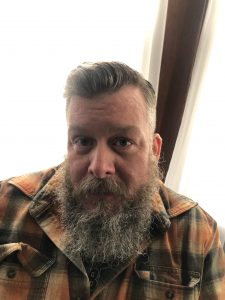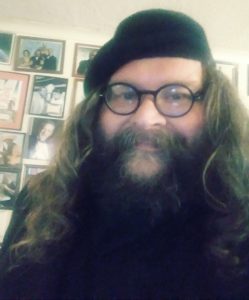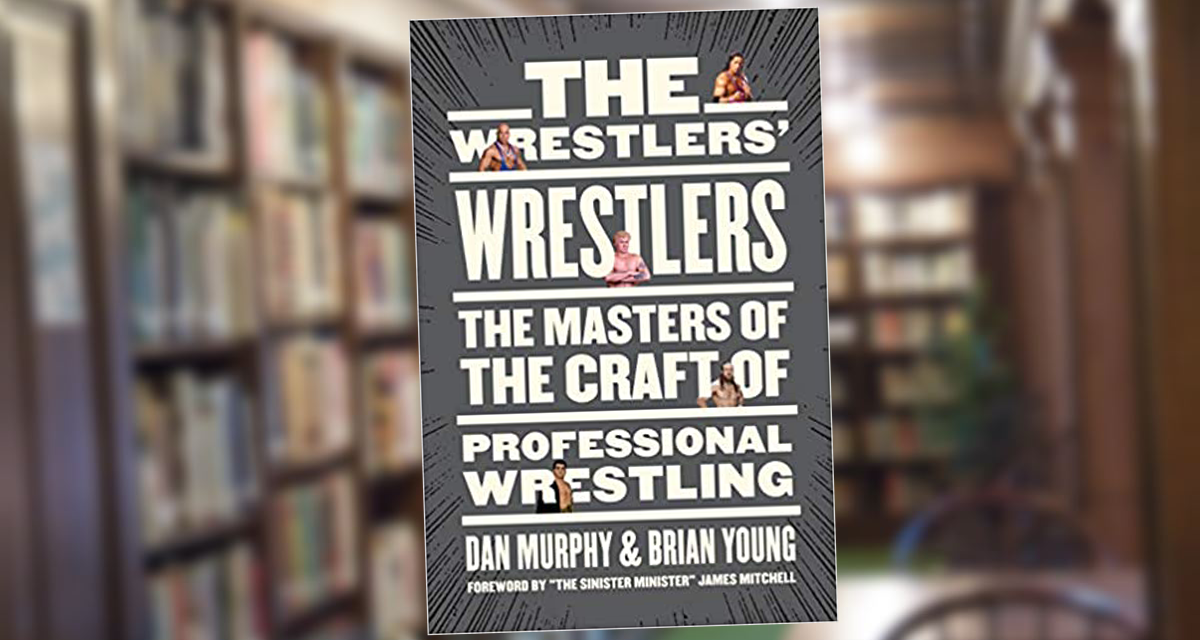On behalf of SlamWrestling.net, I was eager to speak with Dan Murphy and Brian Young about their new book The Wrestlers’ Wrestlers: The Masters of the Craft of Professional Wrestling, out now from ECW Press. Murphy is well known as a writer for Pro Wrestling Illustrated (PWI) for many years, and has penned several books, while Young is a New York based boxing researcher. The two have teamed up for an exciting new book that spotlights wrestling’s elite performers, and analyzes exactly what made them your favorite wrestler’s favorite wrestlers.
SlamWrestling.net: It’s a great concept, your favorite wrestler’s favorite wrestler. How did the idea for the book originate?

Dan Murphy.
Brian Young: That’s an interesting story. Dan and I are both from Western New York, where the great Dick Beyer was from. When Beyer died, I was very sad and started thinking that someone should talk to as many of these old-timers as possible, get their stories, their insights their memories of the business in their own words. For me it was a no-brainer that someone should be my old friend Dan Murphy, after all he was a wrestling insider, a historian, and an amazing writer. This idea sat in the back of my mind for a while, then one day I was giving a lecture on The Whitechapel Murders of 1888 (Jack the Ripper) and who shows up? Dan Murphy. I remember running over and saying, “Dan, you have to stick around after the lecture, because I have your next book idea for you!” That was the seed.
Dan Murphy: I had also been toying with an idea of doing a book on underrated wrestlers, the wrestlers who were most respected by their peers. I thought maybe we could combine Brian’s concept of interviewing older wrestlers and preserving some of their thoughts and memories and focusing it on their thoughts of the wrestlers they most enjoyed working with or watching. We managed to take two slightly different concepts and marry them together for this book.
Slam: You cover a varied expanse of wrestlers from the early 20th century right up to today’s stars. What was the process to decide which names ended up in the book?
Young: It was really the folks we talked to, we listened to what they said, what names kept coming up over and over. Obviously there were a few names we knew would be in the book, Lou Thesz for example, but for the most part, the wrestlers themselves put the list together.
Slam: Were there any revelations in what you unearthed that surprised you? Any misconceptions you had that were corrected?
Young: Oh, so many! But I will tell you what surprised me the most, and this is the 100 per cent truth, I was surprised how much I ended up really loving wrestling again. As Dan knows, I was pretty much a total outsider. I loved wrestling as a kid, but hadn’t even watched it in probably 30 years. Well this project re-sparked my love and especially my respect for the business and for everyone involved in it.
Slam: Many of the names you covered were second generation stars. Nick Bockwinkel, Barry Windham, Curt Hennig and others. Were they looked at differently in terms of how their peers viewed them, being the sons of famous fathers? Was there more pressure on them to learn the craft?
Murphy: Kevin Sullivan actually brought that up. We have a quote from him in the book, talking about Ricky Morton, who also was a second-generation wrestler: “Those second-generation guys have a step up on guys coming into the business. They’ve been around it their whole life, training with their dad from when they were young.” In terms of pressure to learn the craft, I think there certainly was in a lot of cases. And I think there were also cases where dads wanted to keep their kids out of the ring completely and go on to college and become doctors and lawyers. All families are different, right?
Young: Exactly. I asked that to just about everyone and it seemed to be a mixed response. In some territories, guys were given instant respect in the locker room if they were a legacy. In some of the, let’s say, rougher areas, they were forced to prove their worth. But the truth is, everyone in this book who were second or even third generation guys, they busted their asses or they wouldn’t be here. Remember, there were plenty of second generations guys who DIDN’T make it.
Slam: Most of the names instantly pop out as great scientific or technical wrestlers. Many had amateur backgrounds though it wasn’t a surefire way to pro success. Were there certain essential components in learning the craft, pro style?

Brian Young.
Murphy: I think having amateur wrestling or catch wrestling experience coming into the business definitely gives you a head start, especially in the territorial era. These days, I think it still provides a bit of an advantage, but wrestling ability is much less important than showmanship and personality in today’s product. Where I think having an amateur background helps the most is because those wrestlers understand the mechanics of wrestling. They understand how important it is to use the hips for power, to keep your center of gravity under control, to instinctively not go to your back when being taken down (or, with MMA, to go to your back and get up your guard). They also know how moves feel – what it feels like to get an arm barred, to be guillotined, or to get the wind knocked out of you on a head and arm throw. That makes them instinctively better sellers. The difference is that amateur wrestlers and MMA fighters try their hardest not to register pain because they don’t want their opponent to know they’re in pain, whereas in pro wrestling, you’re trying to convey that emotion to the fans in the upper deck. But once they get over that little shift, I think amateurs are better prepared than wrestlers without amateur experience.
Young: Bob Roop told me, and I am paraphrasing, he said, I had to learn pro wrestling style so the audience could see it and it would get over, but I kept all my amateur ability in case someone wanted to test me, or get out of line. So, in that sense, technical ability and shoot-fighting knowledge was a huge advantage.
Slam: There are many newer era and current wrestlers in the book. Did they all hone their craft by studying the older stars? Does every wrestler watch some Lou Thesz bouts?
Young: Wow, that’s hard. I think everyone knows they have to stand on the shoulders of the greats of the past, but as far as how many of them study them… Dan, what do you think?
Murphy: I think they should. Honestly. There is so much a modern wrestler can learn by watching and analyzing matches from the past. Now, it would be hard to sell a 1930s-style match in 2021, I’ll admit. But a modern wrestler can watch people like Thesz and Strangler Lewis and see how they pace their match. How they subtly tease a move throughout the match so when they finally connect with that move it makes sense and the crowd reacts. Be it the 1930s, the ’50s, the ’70s, or the ’90s, there’s so much a modern wrestler can learn from watching the true “masters of the craft” over the years. One question I asked many of the people I interviewed for this book was this: “If a wrestler came up to you today and asked you what wrestlers should I study to become a great wrestler, whose matches would you show them?” And, as Brian said earlier, that’s largely how we determined who we would include in the book.
Slam: Out of the names included in the book, who would you each pick as the one who best knows his craft? Who is the one you would recommend to a new wrestling fan?
Young: Hands down, Terry Funk. Full disclosure, Terry and I have become quite close thanks to this project, but Terry had it all, over five decades, so he was able to change with the business. He could be a great technical wrestler, a hardcore master, a master heel or babyface, plus everyone I talked to, without exception, mentioned Terry as either a favorite or an influence. He may not have been “the best” but he is the personification of what this book is about to me.
Murphy: It’s hard to pick out one above everyone else, because the business has changed and evolved so much over the years. However, I think that you could take Kurt Angle and plunk him down in any era and he would get over. It’s really remarkable how quickly he was able to transition from the Olympics into the pro style and pick up the comedic timing, ring awareness, and storytelling abilities needed to become an elite pro wrestler. He really was a once in a lifetime wrestling talent.
EDITOR’S NOTE: Keep reading SlamWrestling.net for a review of The Wrestlers’ Wrestlers: The Masters of the Craft of Professional Wrestling coming soon.
RELATED LINKS
- Buy The Wrestlers’ Wrestlers: The Masters of the Craft of Professional Wrestling on Amazon.ca or Amazon.com
- Dan Murphy’s articles on SlamWrestling.net
- Brian Young: Twitter
- ECW Press: Website
- February 19, 2021: Dan Murphy isn’t done with wrestling or writing yet
- SlamWrestling Master Book List

